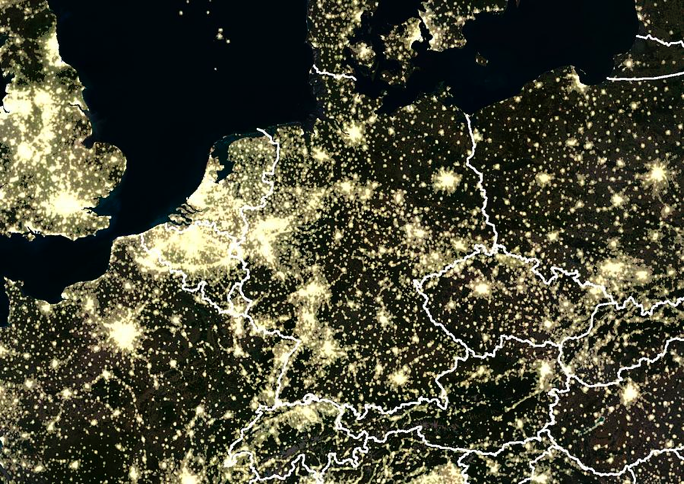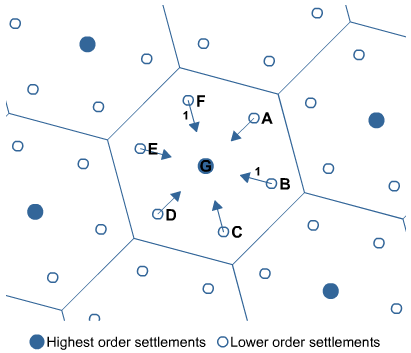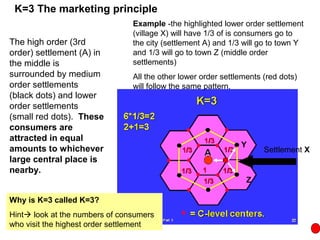Central place theory is a geographic theory that explains the spatial distribution of settlements and the services they offer. The theory was developed by economist Walter Christaller in the 1930s and has since been used to understand the patterns of settlement and trade in urban and rural areas.
At its core, central place theory posits that settlements, or central places, are established in order to provide goods and services to the surrounding area, known as the hinterland. These central places are ranked according to the number and type of services they offer, with larger and more complex settlements offering a wider range of services than smaller settlements.
One key aspect of central place theory is the concept of "threshold population." This refers to the minimum number of people required to support a particular service or business in a central place. For example, a town with a population of 10,000 may be able to support a hospital, while a town with a population of 5,000 may not.
Another important aspect of central place theory is the "range" of a service, or the distance that people are willing to travel to access a particular service. For example, people may be willing to travel further for specialized medical care than for everyday items like groceries.
One example of central place theory in action is the layout of a city or town. In a city with a central business district, the downtown area is likely to be the central place that offers a wide range of services, including shopping, dining, entertainment, and business services. As you move further away from the center of the city, the number and variety of services offered may decrease, with suburbs and outlying areas offering primarily residential and some basic services like grocery stores and gas stations.
Central place theory can also be applied to rural areas, where the distribution of central places and the services they offer may be more spread out. For example, a rural county may have several small towns that serve as central places for the surrounding rural areas, each offering a different set of services.
Overall, central place theory helps to explain the patterns of settlement and trade in urban and rural areas and the services that central places offer to their hinterlands. It is a valuable tool for understanding the spatial distribution of goods and services and the factors that influence where and how they are provided.







